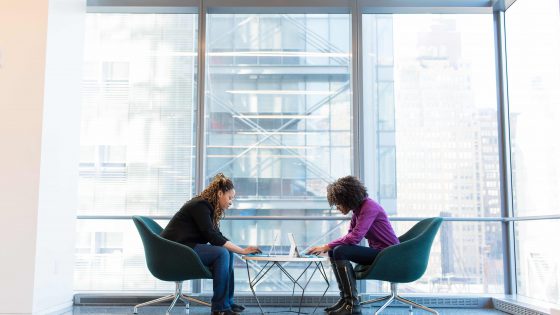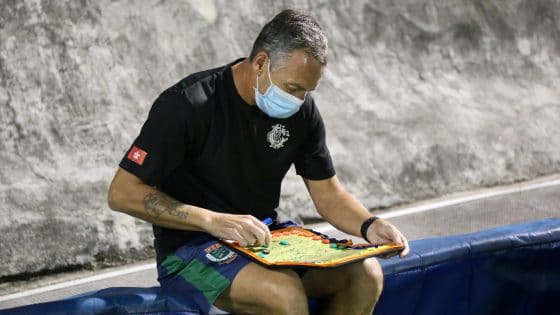Over the last few weeks, we at Human Capital Realisation (HCR) approached several senior HR leaders across the Asia-Pacific region and asked them about the impact of the COVID-19 crisis on their HR operation.
We asked each of the three questions and they gave us some frank and insightful answers. Their responses showed that these HR leaders had quickly stepped up to meet the challenges posed by this crisis – in many cases drawing on strengths they had already built into their teams and processes, but also rapidly adapting and innovating as the situation developed.
And the evidence suggests that HR is in a prime position to support the business to recover and grow as we move out of crisis mode into a post-COVID world.
The questions we asked and the highlights of the responses from the HR executives are given below.
As an HR leader, what are the top three lessons you’ve learned during COVID-19?
Monica Watt, Chief HR Officer at ELMO Cloud HR and Payroll in Australia, hinted at the massive impact on HR when she told us: “We cannot be everything to everyone all the time, but we must try.” The bold type is my emphasis, but the HR leaders who responded to us took this situation very seriously and stepped up to their responsibilities with courage, creativity and empathy.
Watt added that “not everyone knew how to work remotely, and we needed to help adjust and learn how they best worked, along with helping our managers manage the remote workforce.” And Yi Zhang, HR Director for Hong Kong and Macau for international luxury goods group Richemont noted the challenges of “new ways of working, [including] work from home, flexibility at work” and that this had required HR to “review [our] business model and organization.”
The theme of supporting line managers as well as their staff was repeated by many respondents. Maria Lourdes Ann Cruz, Philippines-based Global Design People Director of the multinational engineering firm Arcadis, told us that “key enablers for us to work well during this pandemic” included “providing the right support and structures… coupled with a culture of openness and feedback.” This success, though, was based on already having built “resilient teams and a resilient organization” before the crisis struck.
A Director of Corporate HR at a large food service company in the Philippines pragmatically noted the importance of “balancing employee health and safety [with] sustaining the business and [enabling it] to thrive during these difficult times.” They also found that “driving innovation and agile approaches in introducing new products and services” enabled HR to be “mindful of employee overall mental health and well being.” But as Che Zulhaimee Abdullah, VP of HR at Honda Malaysia stated, “Employee safety and security are more important than the business itself.”
How can HR prepare for an unknown future?
Being prepared for the unknown was another key theme in the responses to our first question. Muhammad Hilman Rao, Head of Human Resources for technology firm Carsem Malaysia, told us that “readiness in terms of Business Continuity Planning (BCP) is critical to the organization to ensure sustainability of the business” in a crisis situation.
HR leaders also noted that the pandemic shone a bright light on the capabilities of their teams. Jennifer Tiffin, Asia-Pacific HR Director of the multinational distribution and outsourcing company Bunzl, told us frankly that, “You don’t know how capable your team is until you are forced to let them fly; [there is] no time to manage — just empower.” Tiffin added: “Your best performers shine.”
But senior HR people also found that some need more help than others in a crisis. One executive reported that “your hidden underperformers are exposed” and a “lack of control in the world and/or their environment can completely unravel [those who you thought were] your stars.”
Collaboration and Innovation
The VP of HR at technology solutions firm T-Systems in Malaysia, Vaclav Koranda, told us that this crisis had enabled such a culture of innovation that the company could “move the limits of what is (considered to be) possible.” Innovation and empathy were also highlighted along with communication by Andika Bayupati, HR Director of DHL Supply Chain in Indonesia. He noted that “we are all humans, and the silver lining of this situation is we can significantly improve our employee engagement using different approaches. And continuously find better ways to do things.” Bayupati nicely referred to this as “rejuvenating our collaboration approach from traditional to digital work.”
Kelly McKenzie, Chief People Officer of Australia’s largest exporter of grain, CBH Group, also stressed the importance of building on their already collaborative culture, as she explained that “Our team can work together really well to respond rapidly to a crisis situation. [CBH Group relies] very heavily on our front line management to understand and effectively cascade messages and build buy in with their teams— investing effort up front to ensure they have clarity and support to do this is critical.”
In a more philosophical comment, Neon Tabafunda, Philippines National Director for Organization Development and Thailand National Director for HR at youth-focused not-for-profit AIESEC, suggested that an important lesson learned is that “it is not our job to overcome uncertainty, but to minimize it and live with it. There will always be things we don’t know and things outside our control. We need to know as much as we can, make decisions based on facts, and focus on what we can control.”
Tabafunda celebrated the creative spirit that can be revealed under crisis conditions when he added, “many things, including our core operations will change, but a clarity of purpose and direction will allow us to find new approaches. Sharing this vision with everyone else will empower them to contribute more innovative ideas!”
Clear communication as a foundation for success in uncertain times was also emphasized in the responses to our next question:
How has HR in your organization responded to COVID-19?
Jennifer Tiffin from Bunzl illustrated what we heard from many HR leaders, when she explained how vital HR has been to the organization at this time: “HR has led the business through COVID from the start, assembling and managing a formal crisis management process through to implementing great new communication processes/tools.” As an example, Tiffin mentioned that her team has “hosted…webinars for leaders and employees covering topics [from] how to keep the kids entertained when home schooled, to hosting a chef to do a live cooking demo on feeding the family from the pantry…right through to mental and financial health.”
A “continuous awareness campaign and newsflashes released to the employees,” was mentioned by Muhammad Hilman Rao of Carsem as another key communication method that worked well.
And many multinationals in the region saw the importance of communicating more broadly, even outside their own country. Andika Bayupati of DHL, noted that “as a global organization we…connected with other HR Directors in other countries.” And Yi Zhang of Richemont emphasized the need to make use of internal expertise to “drive peer learning and [increase] digital learning.”
AIESEC’s Neon Tabafunda acknowledged the importance of open and collaborative communication when he noted that “with the need to pivot and shift operations, we also involved [everyone] in planning and brainstorming sessions. We recognize that no position holds a monopoly on ideas.”
As the pandemic continued, “the focus then shifted towards communicating the vision well and working on change management aspects including communications and capacity building.” This included emphasizing “personal learning & development, especially for managers and leaders in the organization.” And to avoid isolating the organization from what is going on around it, he also reflected that “information on COVID-19 in the country was shared across the network, all the while encouraging conversations and discussion around what’s going on externally.”
HR Provides an Extraordinary Level of Support
As well as ensuring clear communication, HR leaders stepped up again to give additional support that was needed to managers and staff at all levels. Monica Watt of ELMO Cloud HR and Payroll shared some of her initiatives with us: “We moved to a subscription Employee Assistance Program that anyone in their family could access, developing learning programs, established community which included an early birds radio station, and everything from [remote] morning meditation, morning teas, lunch and learns, to quaraniti [cocktail] time on Friday nights.”
Not only that, but she added that “we created care packages and sent notes to each employee, conducted pulse surveys…to focus on resourcing, community, collaboration and engagement.” In another interesting initiative, she told us that “We also used an app to randomly pair people…to have a virtual coffee date.”
And this level of support has continued past the worst of the pandemic. Watt adds: “In returning to the office slowly we have created a safe ecosystem that an employee can flex their time in and out to avoid congestion with transport, provided face masks and hand sanitisers, in the office once temperature is checked and [they are] signed in; employees do not need to leave as they will find everything they need from coffee, drinks, snacks, morning tea and a pre-ordered lunch provided.”
Watt acknowledges that this level of support has been “resource-heavy in time, attention and money, but it has kept our people safe and connected.”
Kelly McKenzie of CBH Group was another HR leader who emphasised the importance of assisting line managers to support their teams: “Within HR our focus has been on supporting leaders with connecting with and leading their teams remotely, [including] mental health welfare checks and communication channels to keep people up to date on our protocols.”
More examples of amazing support for employees were given to us by Maria Lourdes Ann Cruz of Arcadis: “We developed engagement platforms and fun engagement activities. We also provided support and programs on mental wellness.”
This involved work for business leaders also: “Staying connected and visible to our people are key too. We needed to communicate more often and find ways to make sure our leaders are more involved and visible to assure everyone we are on top of the situation.”
Doing Far More Than the Minimum Required
Muhammad Hilman Rao of Carsem Malaysia also spoke of the need for HR to go beyond what the authorities require when he told us: “We have stringent controls in addition to the Standard Operating Procedures outlined by the government. … We have placed doctors on site for real time consultations and provide free vitamin supplements for the employees.”
But although providing support for managers and employees is a vital part of their role, HR leaders also needed to participate in – and in some cases to drive – organization change in rapid response to the changing circumstances brought about by the pandemic. One respondent told us that they “partnered with the business in performing an organization review and restructuring to respond to the severe effect of the pandemic,” and Violet Chng, Singapore-based HR Director for Asia of technology multinational Ultra Clean, gave us a great example of the need for HR to be agile when she mentioned that “speed in responding is very important, especially [with regard to] to the Singapore/Malaysia border closure,” which occurred with little warning back in March.
Finally, looking to the future, and how these lessons can be applied more broadly, we asked our respondents:
What can other organizations learn from your experience during COVID-19?
Monica Watt of Elmo was unapologetic for her bold leadership in a crisis. She told us, “I did not ask permission to do my job, as CHRO I am responsible for the health, wellbeing and engagement of my people, I did everything because it was the right thing to do. … In my opinion, the impact we made on our people outweighs any cost.”
However, this commitment and outcome was not achieved without broad participation and support across the organization. It was most important, as she stated, that “we brought in all layers of management, so the engagement and care became a business-wide responsibility, not an HR responsibility.” The end result? “Overall the positive sentiment on our people and feel to the business has grown positively, and as such our culture and performance has increased.”
At Arcadis, Maria Lourdes Ann Cruz had a strong message for other HR leaders, as she summarized her key drivers of success: “Stay connected, stay emphatic and stay true to our value of People First. Communicate, communicate, communicate. Innovate and act fast.”
Jennifer Tiffin of Bunzl used the same words: “Communicate Communicate Communicate,” she told us, and she also noted that “if it’s about protecting your employees’ safety and the continuity of supply and in turn protecting jobs, your employees will appreciate it.” She added a note of caution: “But be prepared to flex [and] adapt your plans as you go.”
Be Prepared to Continue to Adapt and Change
Muhammad Hilman Rao of Carsem also stressed the need for close monitoring of progress and being unafraid to adapt and change. He told us that it is necessary to allow for “continuous enhancement of the Business Continuity Plan, and it has to be tested to minimize any hiccups.”
It’s also necessary to bring all employees on this journey, as he noted that, “employee engagement is critical as we need to build [their] confidence as a caring employer that we are able to provide a safe workplace for them.”
Vaclav Koranda of T-Systems was also successful in this regard, and told us that in his view, “our Business Change Management [process] is very good,” and noted with a smile that he would be “happy to sell it as a consultancy.” And looking beyond the boundaries of the organization was stressed also by Violette Chng of Ultra Clean. She explained to us that “Information sharing, resource sharing … among the industry is key [to success].”
Although the not-for-profit sector is unique in many ways, Neon Tabafunda of AIESEC noted a similarity with the members of their organization and the employees of our other respondents: “[Our] membership is our main asset. And for them to be engaged with the organization, their needs outside of the organization have to be met first.… And most of our initiatives were heavily contextualized to what our membership needs even outside of the organization.” To this end, he told us that “we contextualized our Learning and Development initiatives to the external world.”
Going forward, Che Zulhaimee Abdullah noted that “Online learning is crucial and new skills are required, such as [the] capability to deliver learning online.” And Yi Zhang of Richemont had success in implementing even greater technological advances by using “HR Robotic Process Automation and [an HR] chatbot to accelerate digitalization.”
CBH Group’s Kelly McKenzie was pleased to share that “we have seen a much greater openness to working flexibly since returning to office post COVID,” and that HR had worked with the business “[to ensure] senior leaders are visibly and frequently working flexibly themselves.” The result has been that “this removes any stigmas or negative perceptions around an individual’s ability to perform and contribute if they are not in the office [during normal working hours] everyday.”
Conclusion
Overall, the HR leaders greatly impressed us with their practical, optimistic and innovative approach to the COVID-19 crisis. Each of them showed courage in taking necessary and often challenging actions, but they were also humble enough to share some of the lessons that they had learned in the face of unprecedented demands on their leadership.
They represented a range of industries across the Asia-Pacific region, and in many cases took radically different approaches based on the culture of their company and their location, as well as the circumstances they faced. As we attempt to summarize their experiences we note that all of them were:
Ready to review and adjust. This included examining their way of working, their structure, responsibilities and policies with great speed and agility, balanced with a keen sense of their duty of care for all employees.
Providing continual support. This was done with an attitude of empathy and cooperation through the provision of tools and processes, along with a great emphasis on effective communication – including listening.
Keeping their balance. They noted that constant adjustment may be necessary, and that there is never a choice between people and profits, but a balance between both. Their role also requires a balance between the duty of care to employees and responsibility to the business and its sustainable growth. And just as with literal, bodily balance, balance in HR requires constant monitoring, paying attention to feedback and making adjustments where necessary.
But what is next for these HR leaders? Once again, they have shown how necessary it is that they are intensely involved in tactical and strategic decisions for the business – not only in a crisis, but also in normal operations. In many parts of Asia, the COVID crisis is far from over and our HR leaders continue to innovate and to support all employees.
It is vital that HR leaders are deeply embedded in the planning process for the post-COVID business environment, thereby ensuring that the greatest asset of any organization, its people, are also fully represented in this process.
Peter Brace is the CEO and co-founder of Australian-based consulting firm Human Capital Realisation (HCR). For over 30 years, he has been providing companies, from SMEs to large corporations, with technology-based solutions that help grow not only their businesses, but also their people. Follow him on LinkedIn.



















